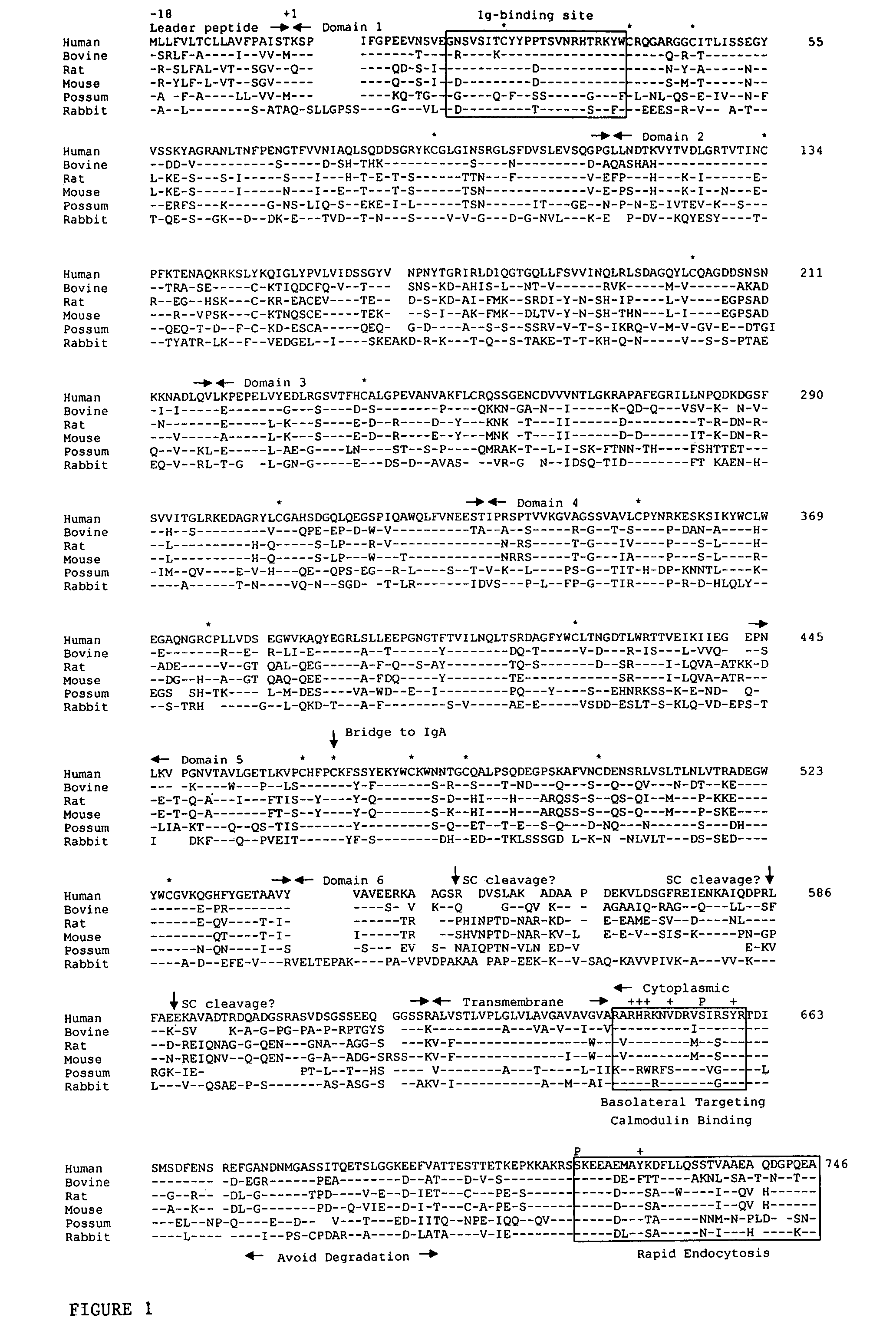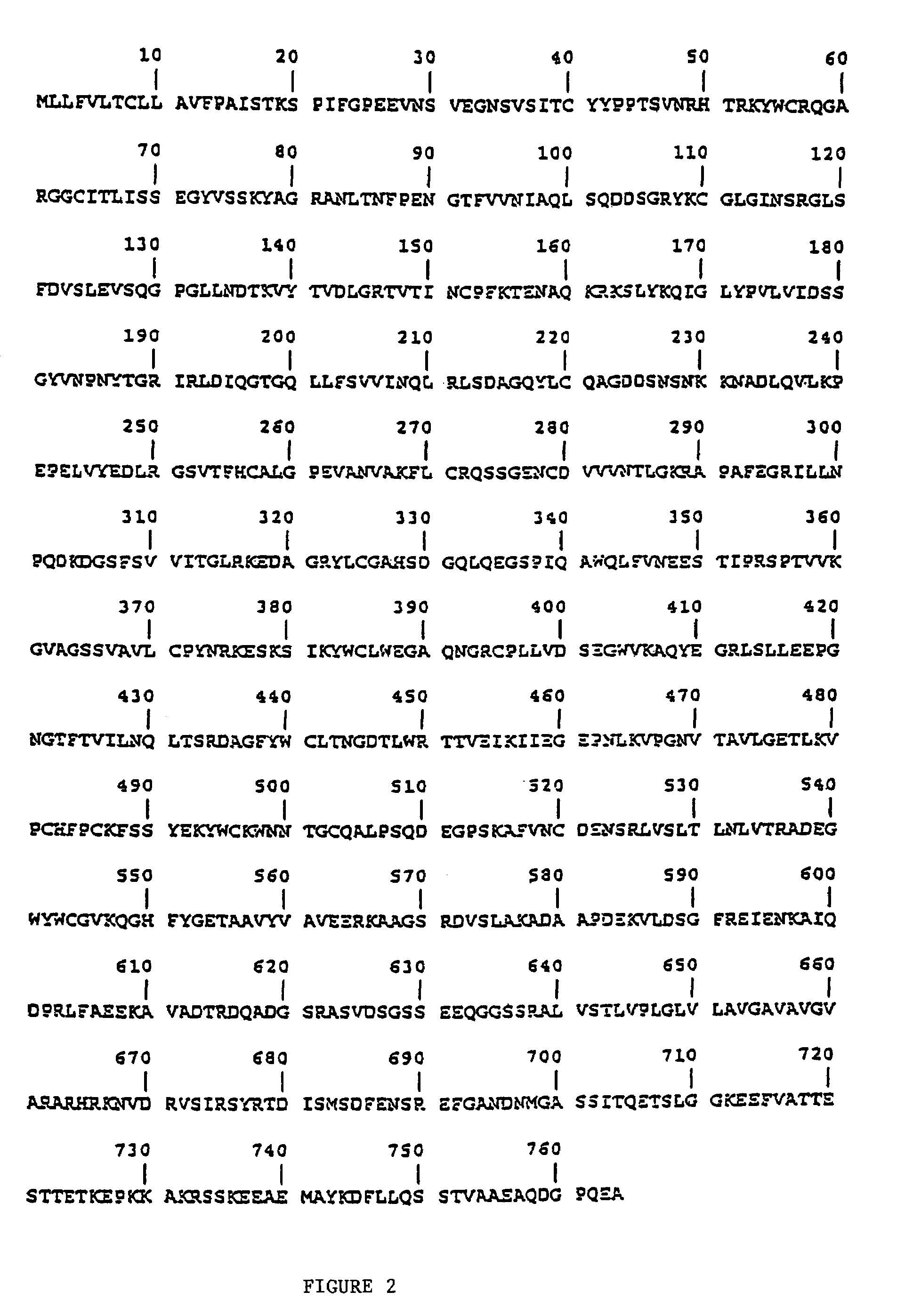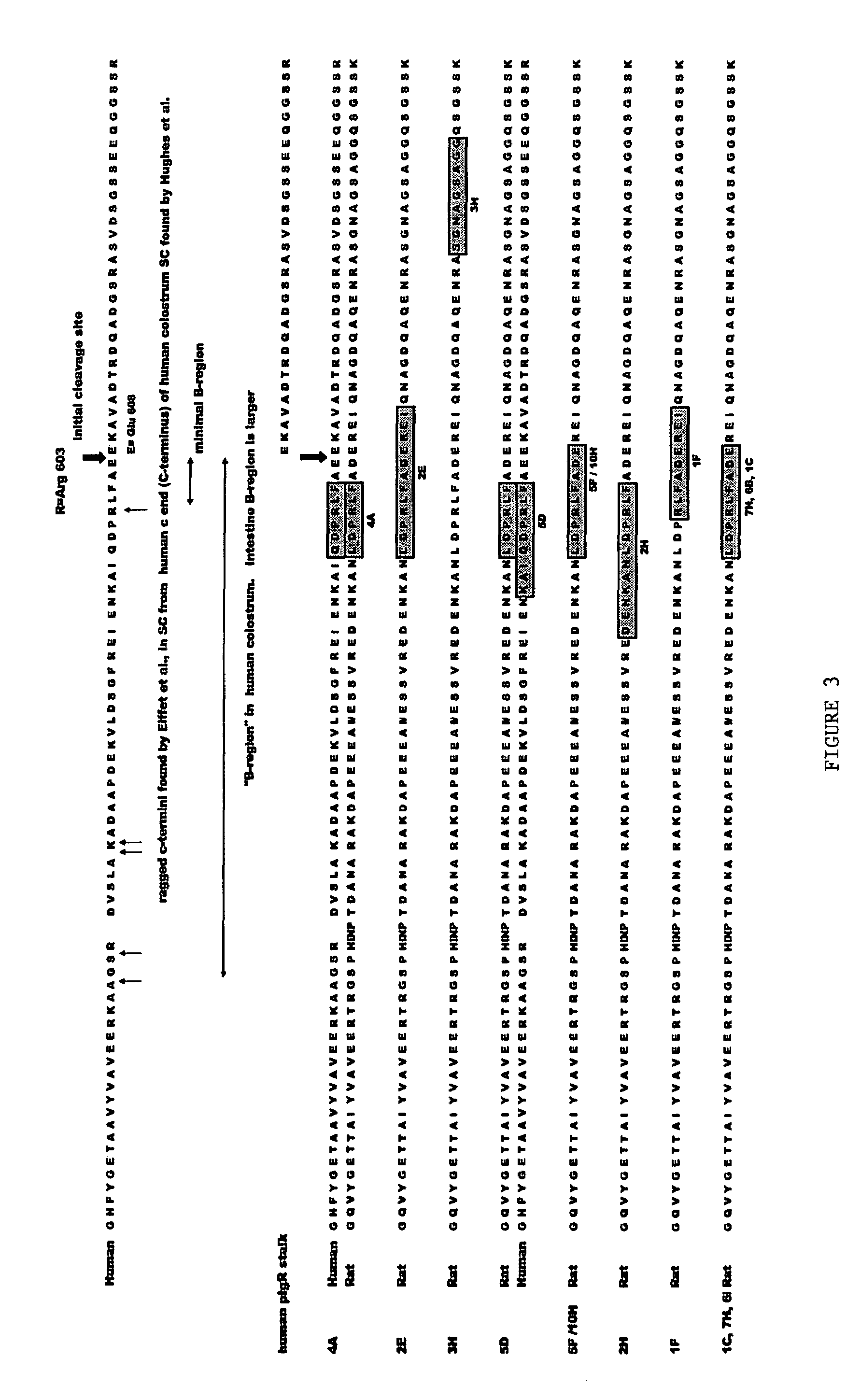Methods of targeting agents to cells expressing the polymeric immunoglobulin receptor
a technology of immunoglobulin and target cells, applied in the direction of peptide/protein ingredients, macromolecule non-active ingredients, fusion polypeptides, etc., can solve the problems of difficult to find alternative delivery systems, difficult to achieve cost-effective or convenient treatment, and often rival search for alternative delivery systems, etc., to achieve inhibit the proteolytic cleavage of sc and increase the rate
- Summary
- Abstract
- Description
- Claims
- Application Information
AI Technical Summary
Benefits of technology
Problems solved by technology
Method used
Image
Examples
example 1
[0210]This Example describes a method of producing and assaying for antibodies and Fab fragments which specifically bind to the rabbit pIgR stalk region. Among other things, such antibodies can be used as negative controls in assays for determining that ligands bind to the B region rather than to the pIgR stalk.
[0211]The membrane-spanning segment of the rabbit pIgR begins at the Valine residue at position 630. The sequence of the twenty three extracellular residues of the rabbit pIgR that precede the membrane-spanning segment is: 607-AspProAlaSerGlySerArgAlaSerValAsp AlaSerSerAlaSerGlyGlnSerGlySerAlaLys-629 (SEQ ID NO:7).
[0212]Two peptides were synthesized (Immuno-Dynamics, Inc., La Jolla, Calif.) representing the extracellular, membrane proximal 16 and 23 amino acids of pIgR. A C-terminal cysteine was added for conjugation purposes. Peptide sequences (in single letter code) were: DPA SGS RAS VDA SSA SGQ SGS AKC (SEQ ID NO:8) for the primary peptide; and the subsequence peptide: ASV...
example 2
[0219]Antibodies directed to desired portions of the pIgR B region can be generated by using peptides of the B region following art recognized techniques, such as those set forth in the preceding Example. Suitable peptides of portions of the B region can be selected from, for example, the sequences shown in FIG. 1. With reference to FIG. 2, suitable examples include: Lys577-Arg603; Lys577-Glu607; Ser574-Arg603; Ser574-Glu607; Val560-Arg603; Val560-Glu607; Cys544-Arg603; and, Cys544-Glu607. Antibodies raised against these or other peptides are then tested against the most abundant form of SC present in the intestine of the animal species of interest; any antibodies that bind to that form of SC are not within the scope of the ligands of the present invention.
example 3
[0220]This Example describes selection of human recombinant single chain variable region fragment (scFv) antibodies by phage display.
[0221]Selection of scFv by phage display requires a soluble biotinylated antigen or antigen immobilized on a solid support. Because scFv selected by phage display tend to be low affinity binders and because the soluble antigen may allow selection of higher affinity scFv (R Schier et al., J. Mol. Biol. 255:28-43, 1996), the selection approach with soluble antigen is chosen. The pIgR B region peptide corresponding to 23 amino acids of the putative B region of the rabbit pIgR is conjugated to biotin via the sulfhydryl group of the cysteine residue using biotin-BMCC ((1-Biotinamido-4-(4′[maleimidomethyl]cyclohexane-carboxamido)butane) (Pierce Chemical Company, Rockford, Ill.) based on the method described in the product instructions. To ensure that the peptide does not dimerize via the sulfhydryl groups, the peptide is first reduced with 1% sodium borohydr...
PUM
| Property | Measurement | Unit |
|---|---|---|
| dissociation constant | aaaaa | aaaaa |
| dissociation constant | aaaaa | aaaaa |
| dissociation constant | aaaaa | aaaaa |
Abstract
Description
Claims
Application Information
 Login to View More
Login to View More - R&D
- Intellectual Property
- Life Sciences
- Materials
- Tech Scout
- Unparalleled Data Quality
- Higher Quality Content
- 60% Fewer Hallucinations
Browse by: Latest US Patents, China's latest patents, Technical Efficacy Thesaurus, Application Domain, Technology Topic, Popular Technical Reports.
© 2025 PatSnap. All rights reserved.Legal|Privacy policy|Modern Slavery Act Transparency Statement|Sitemap|About US| Contact US: help@patsnap.com



